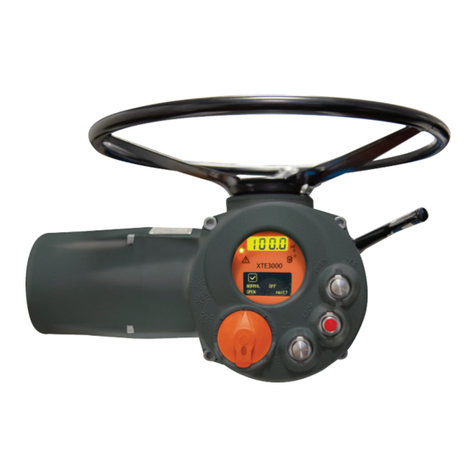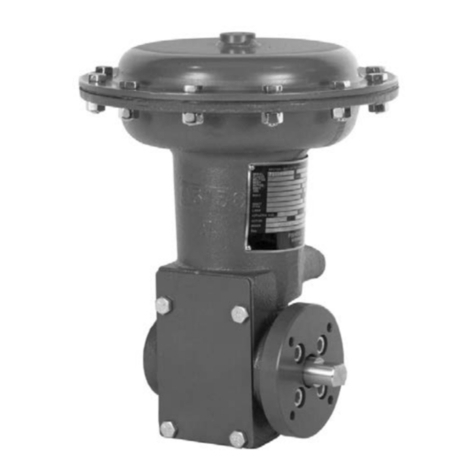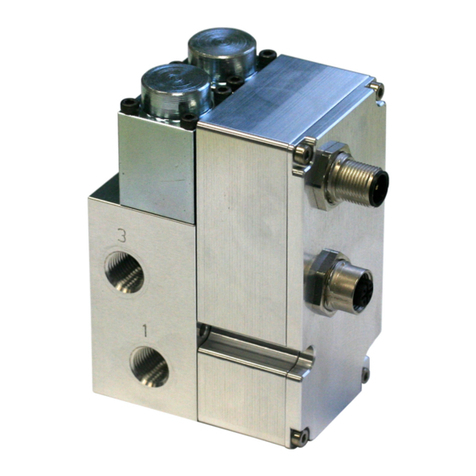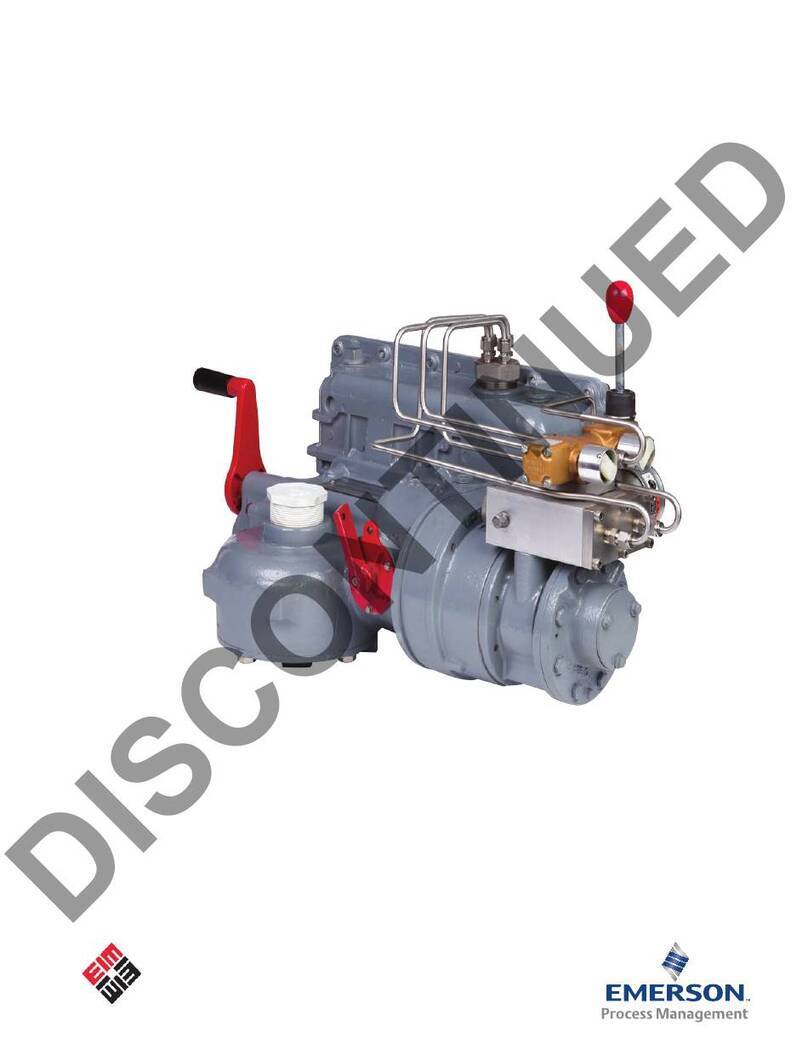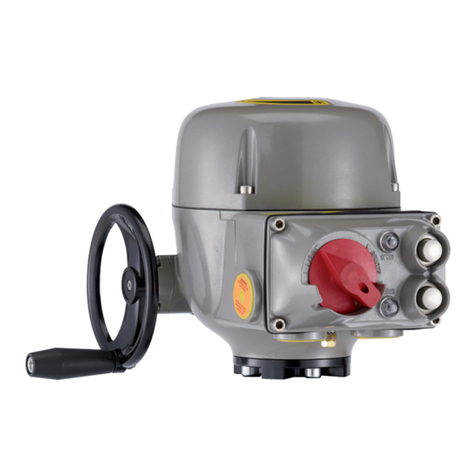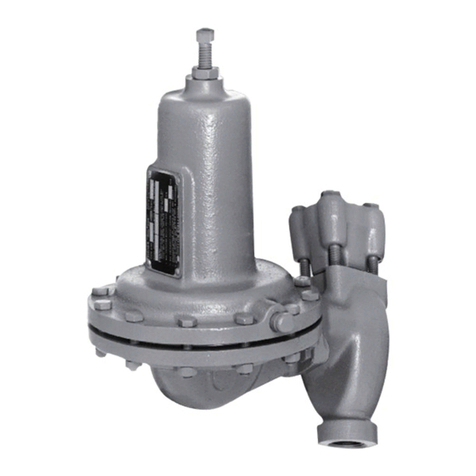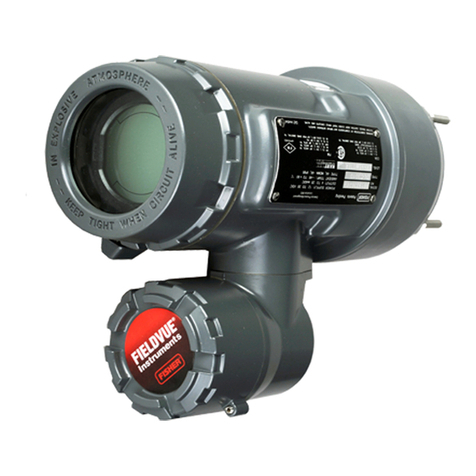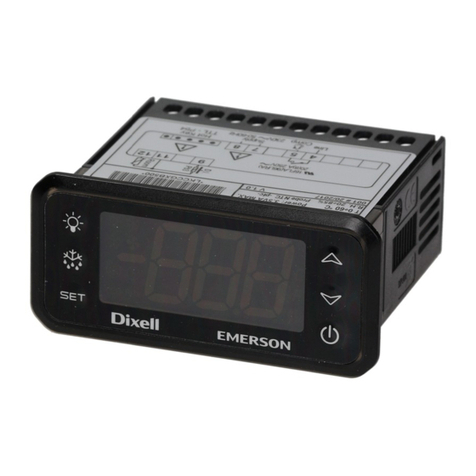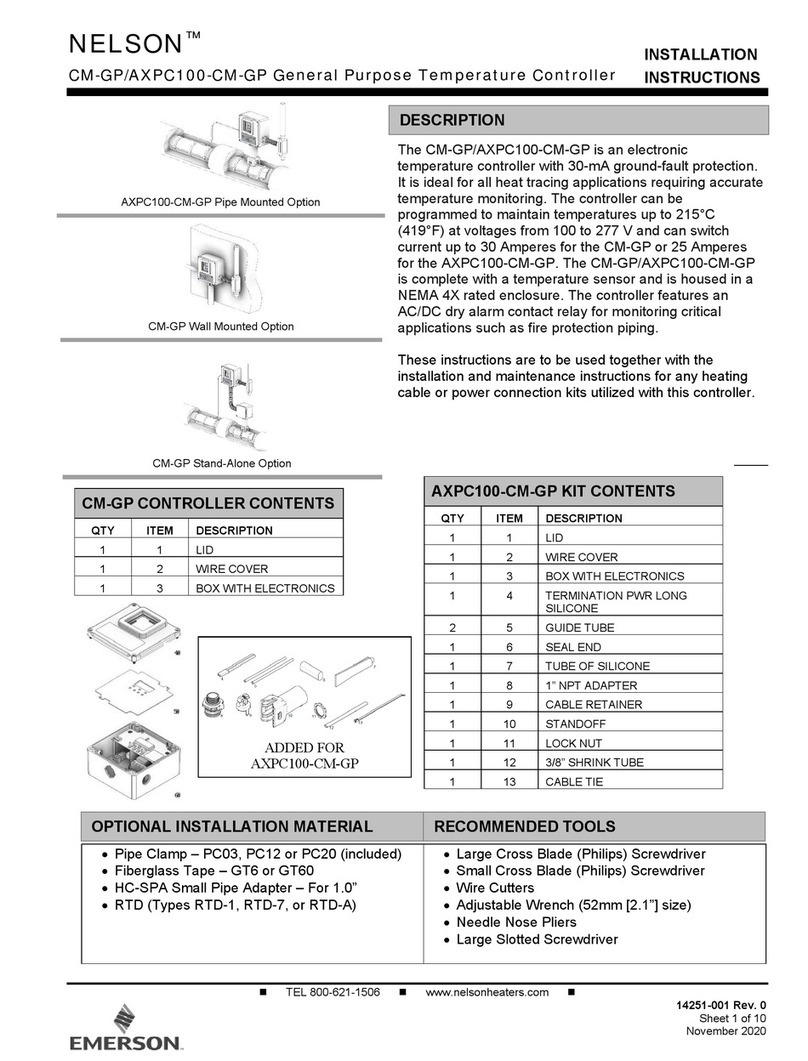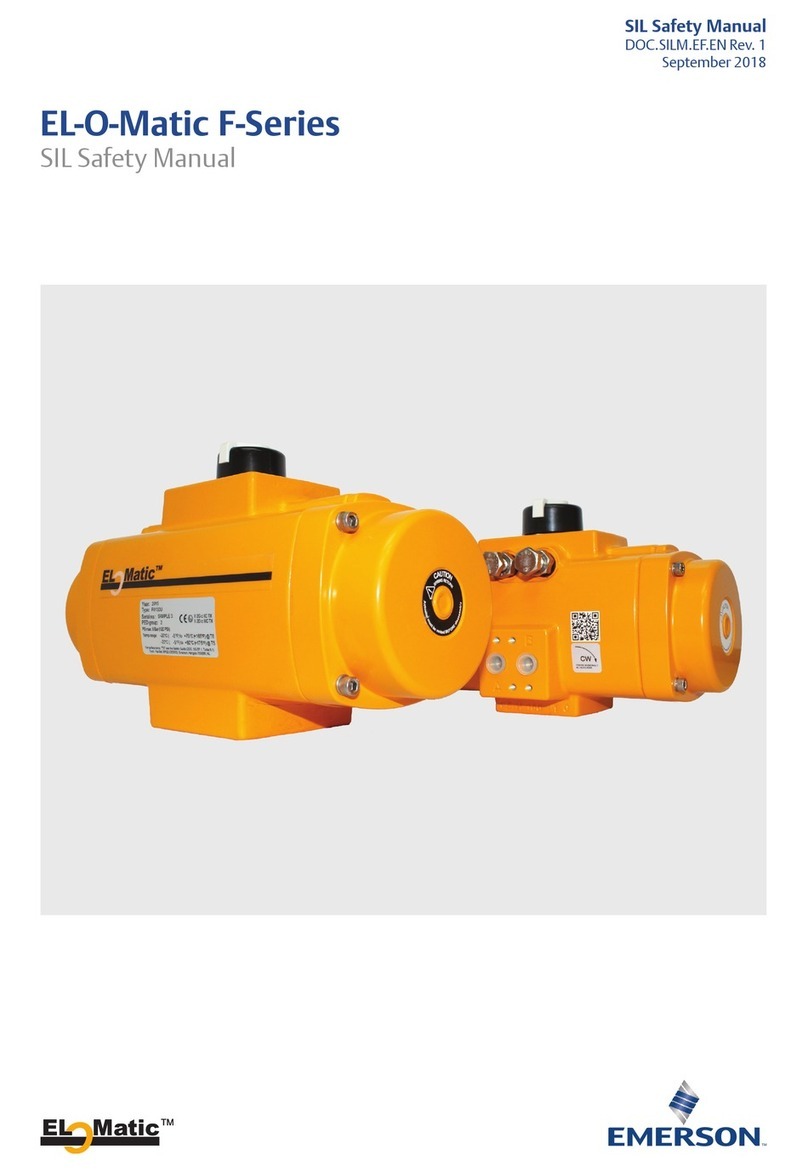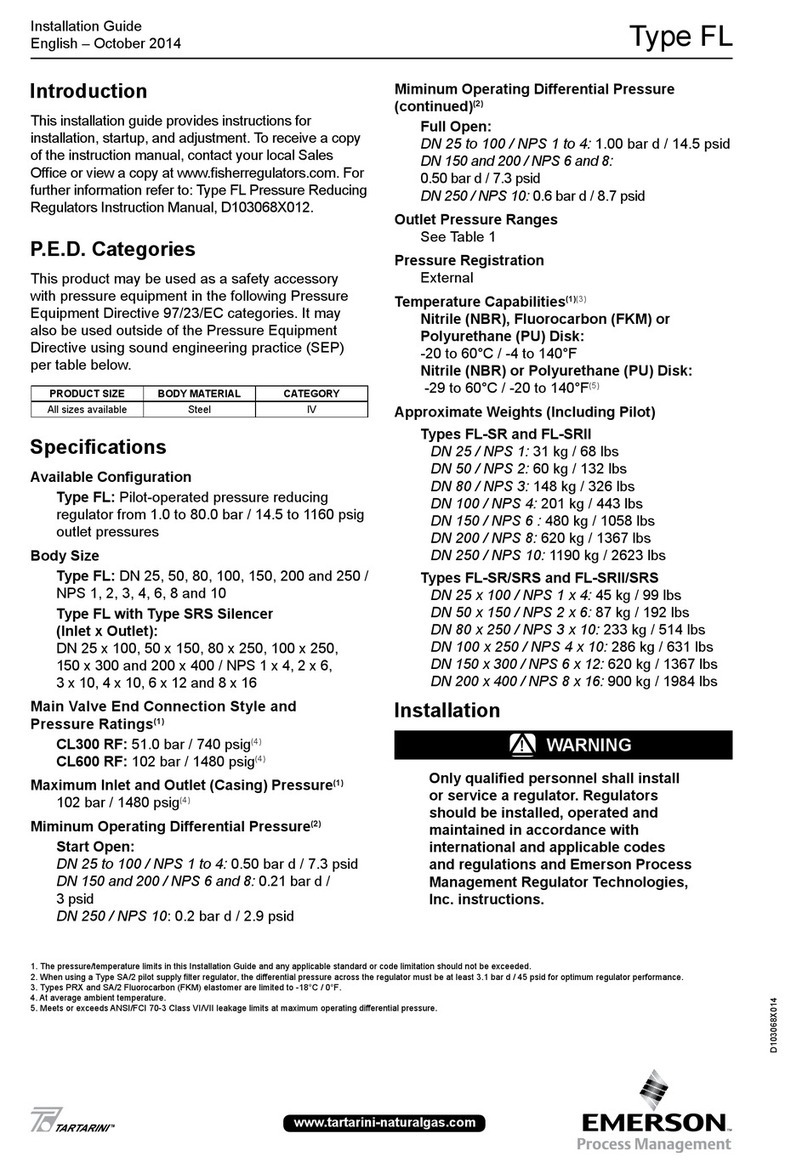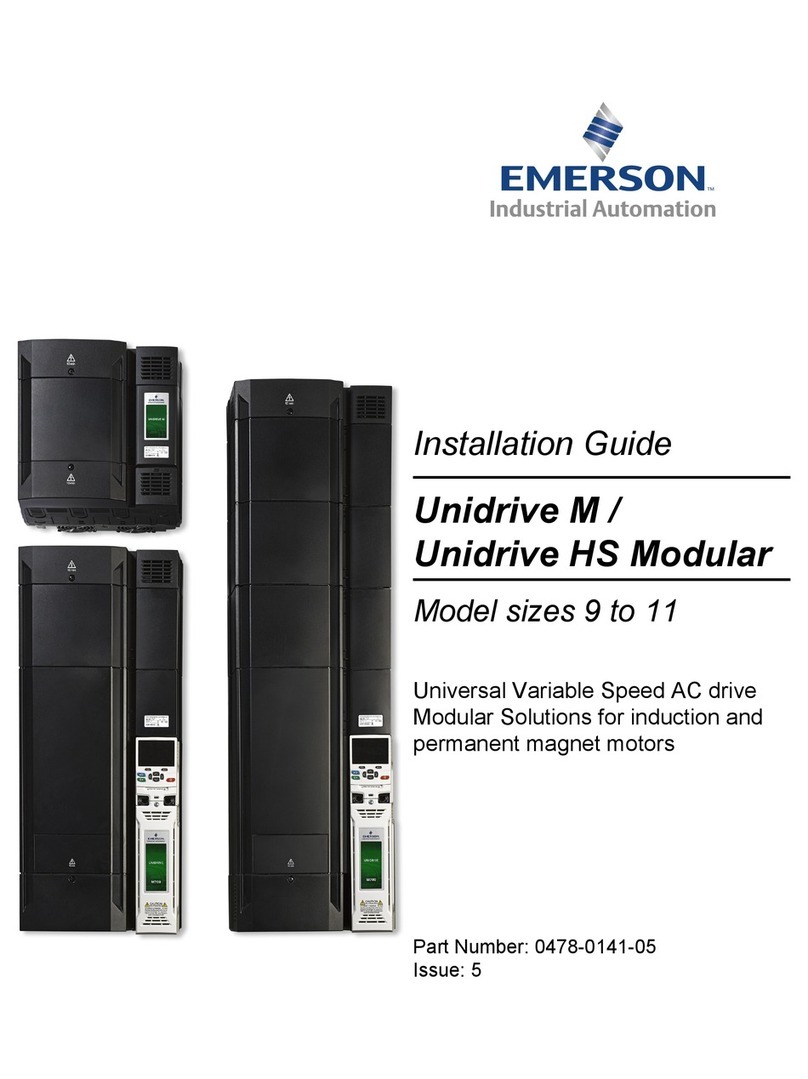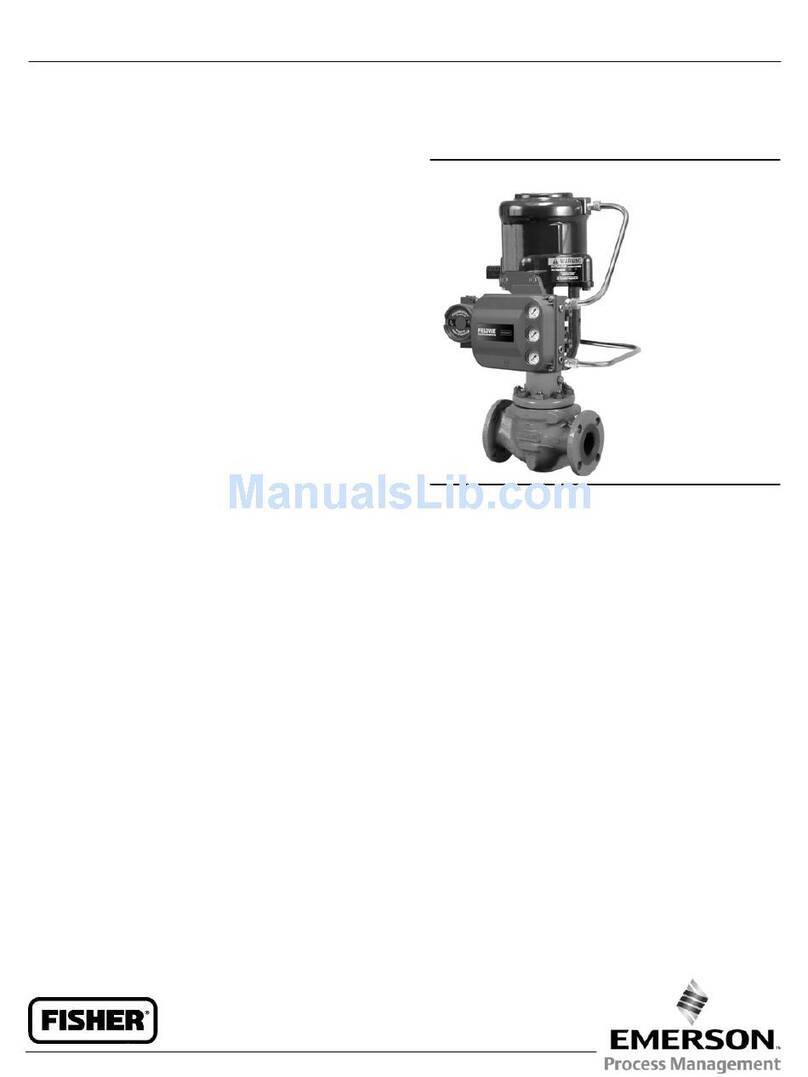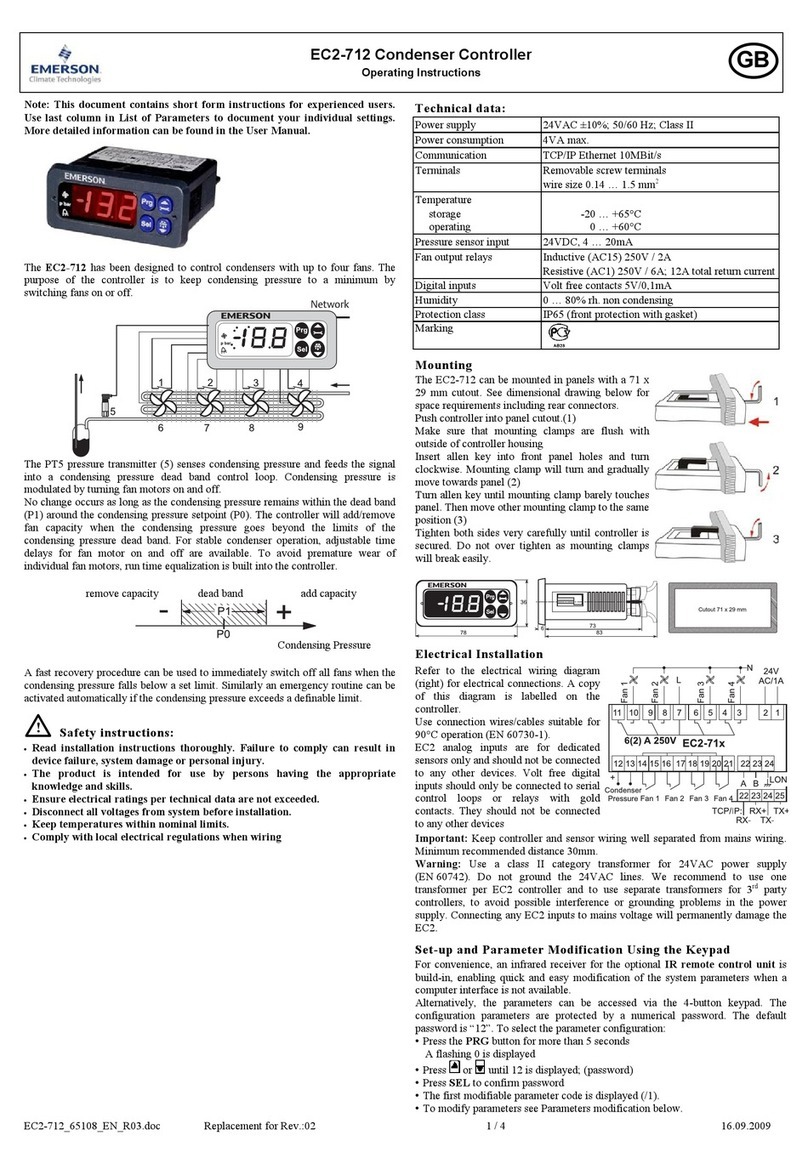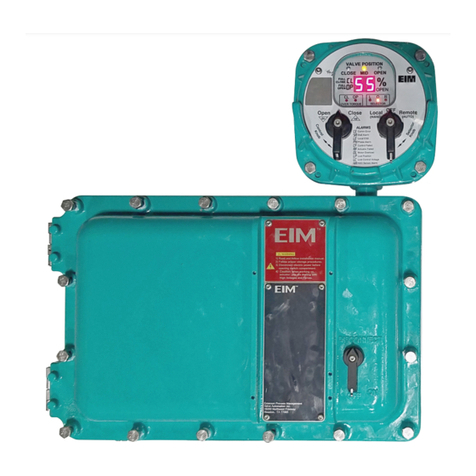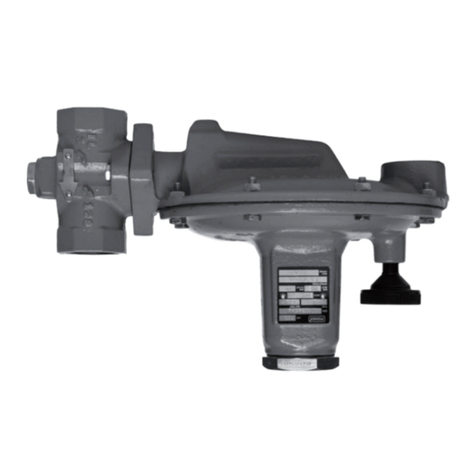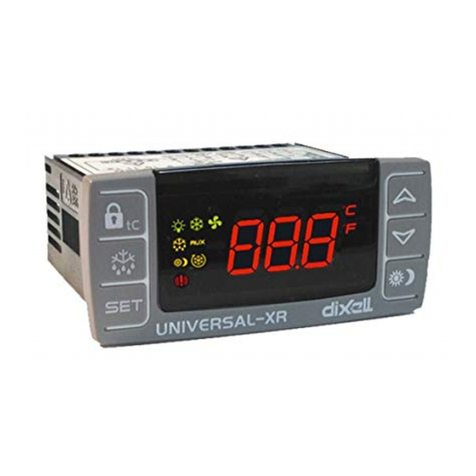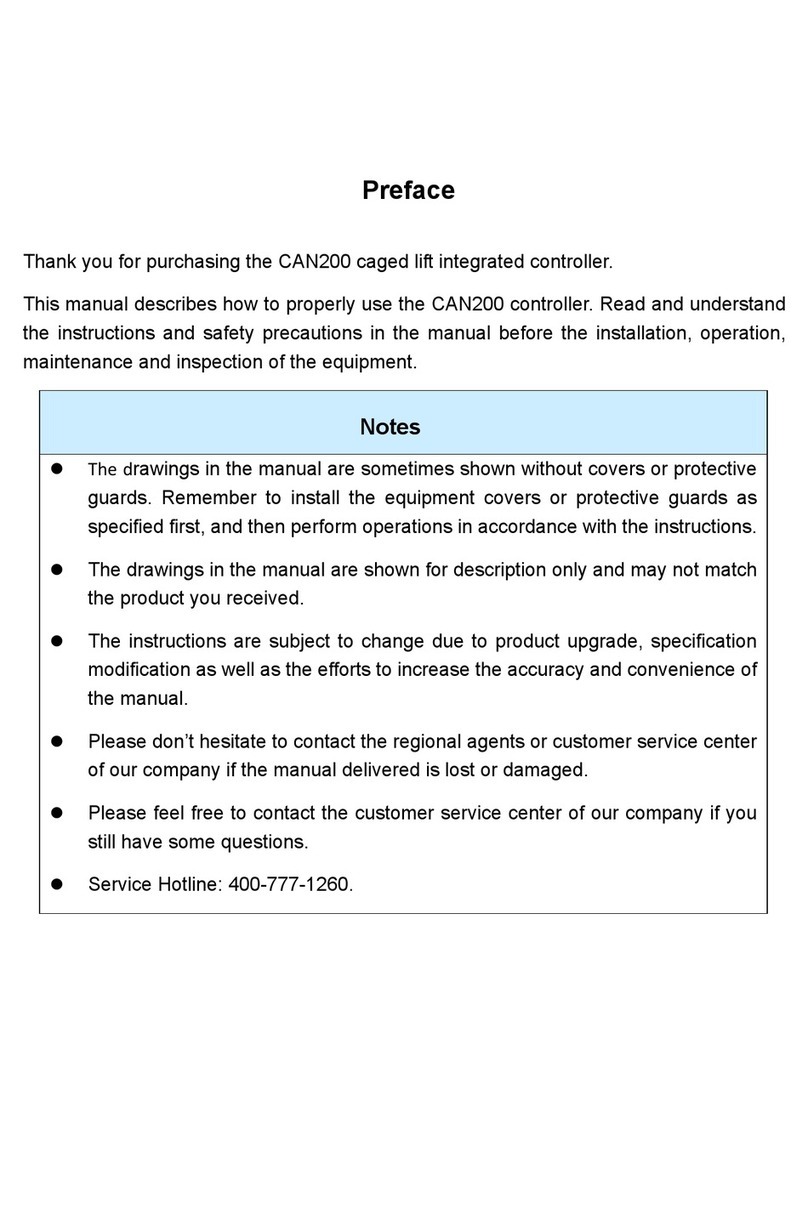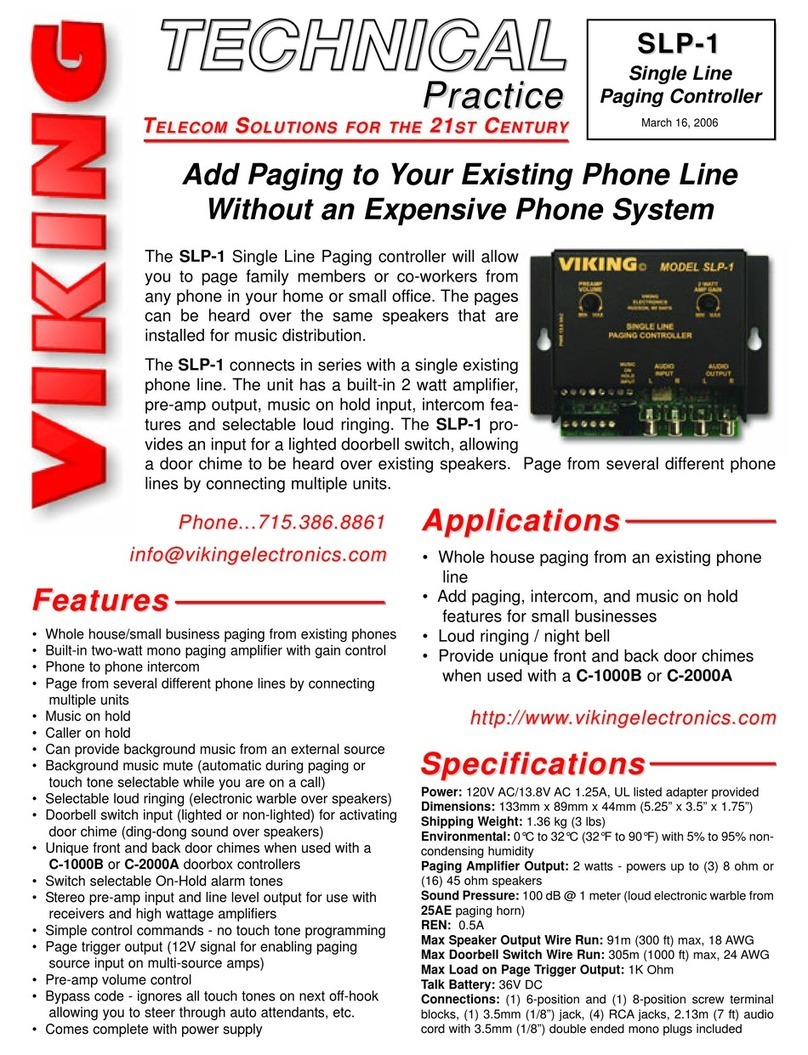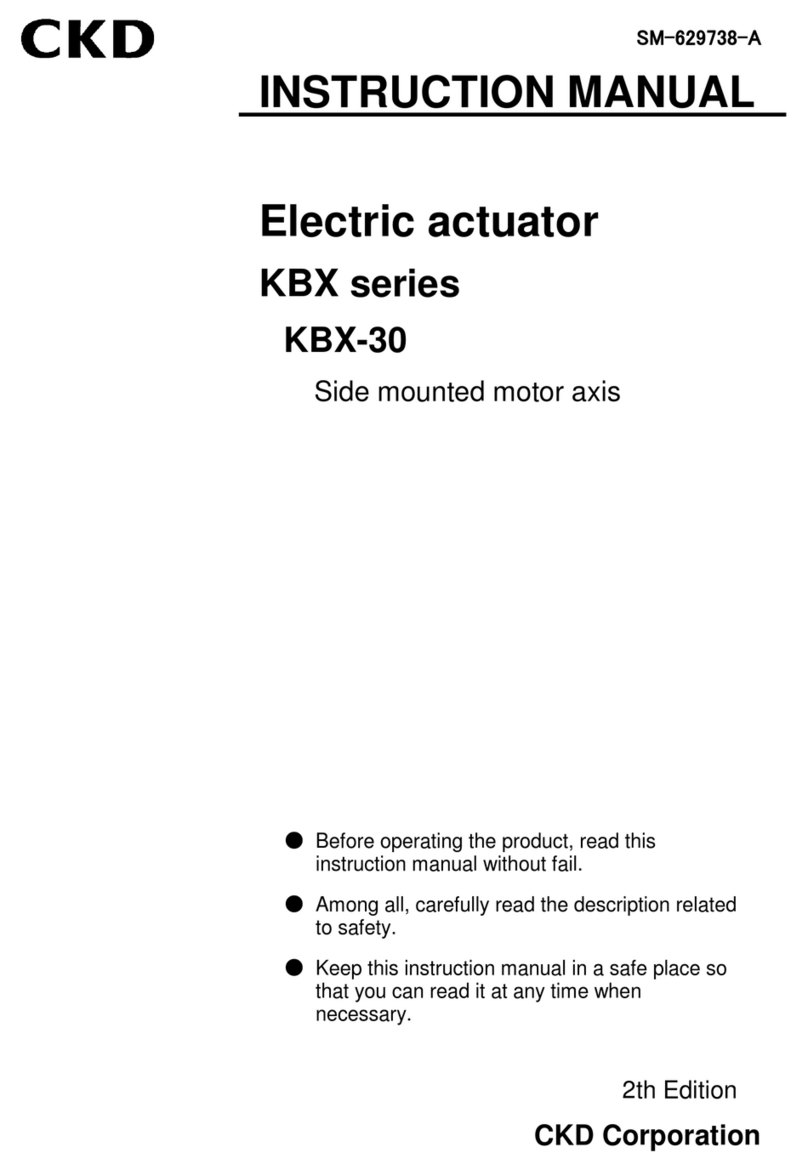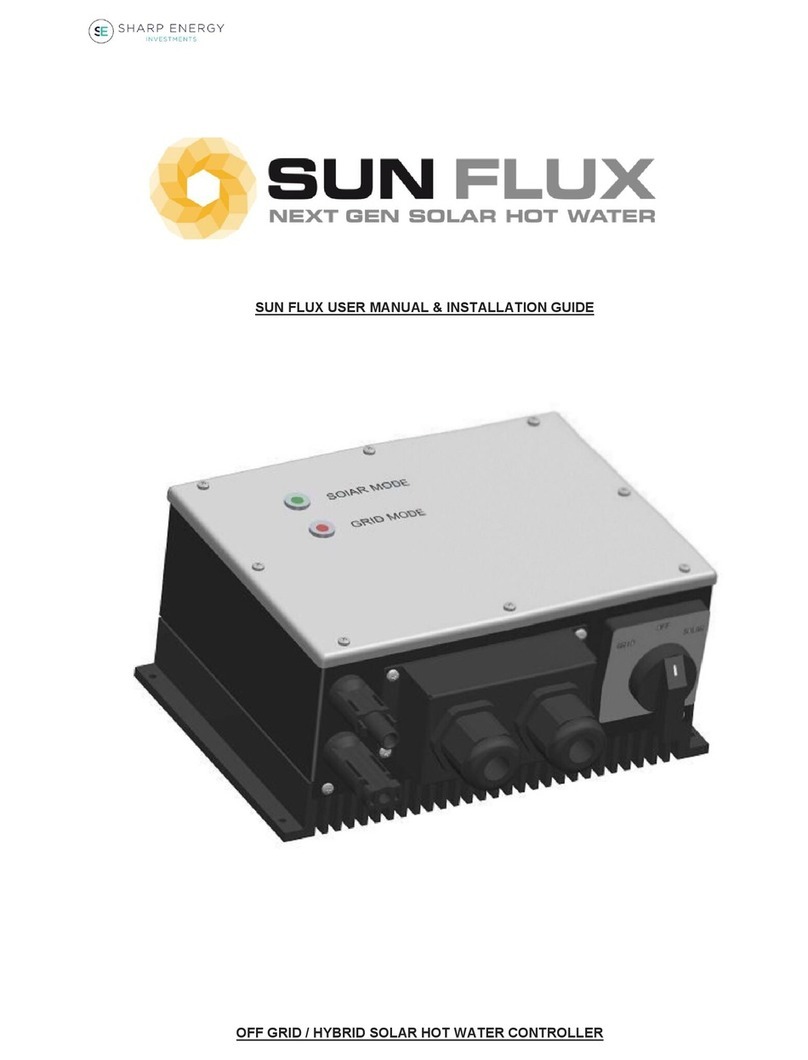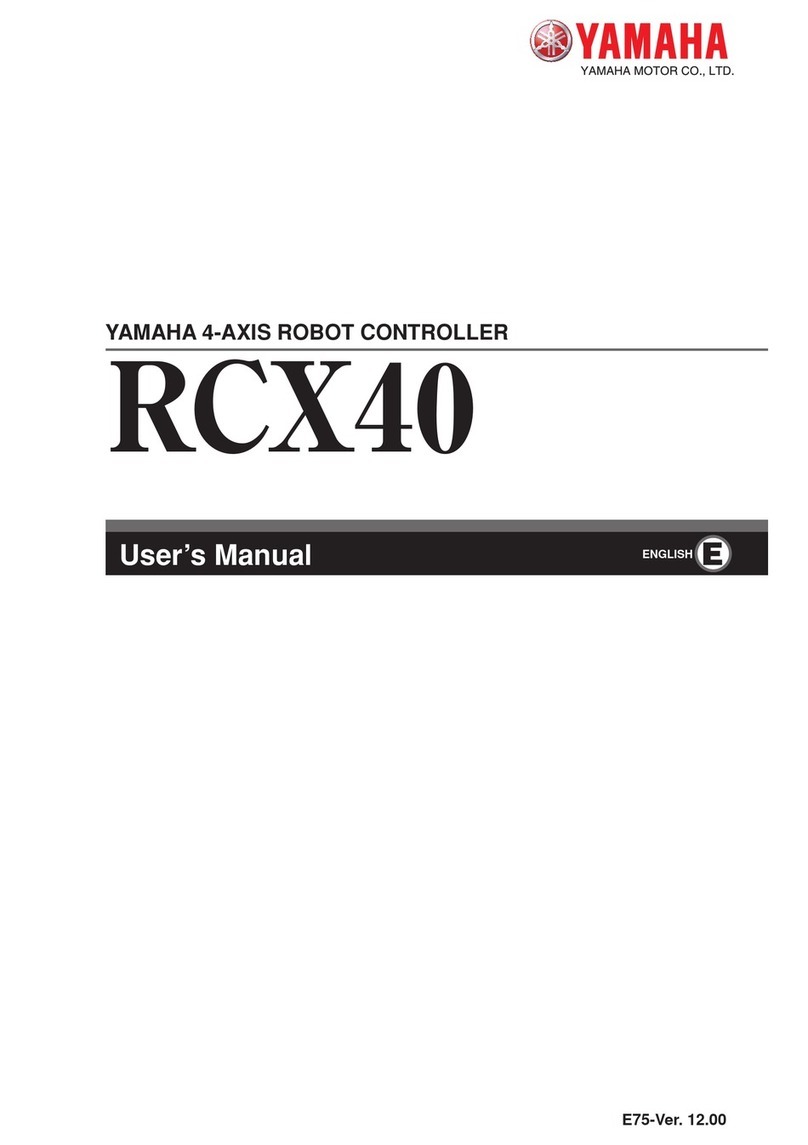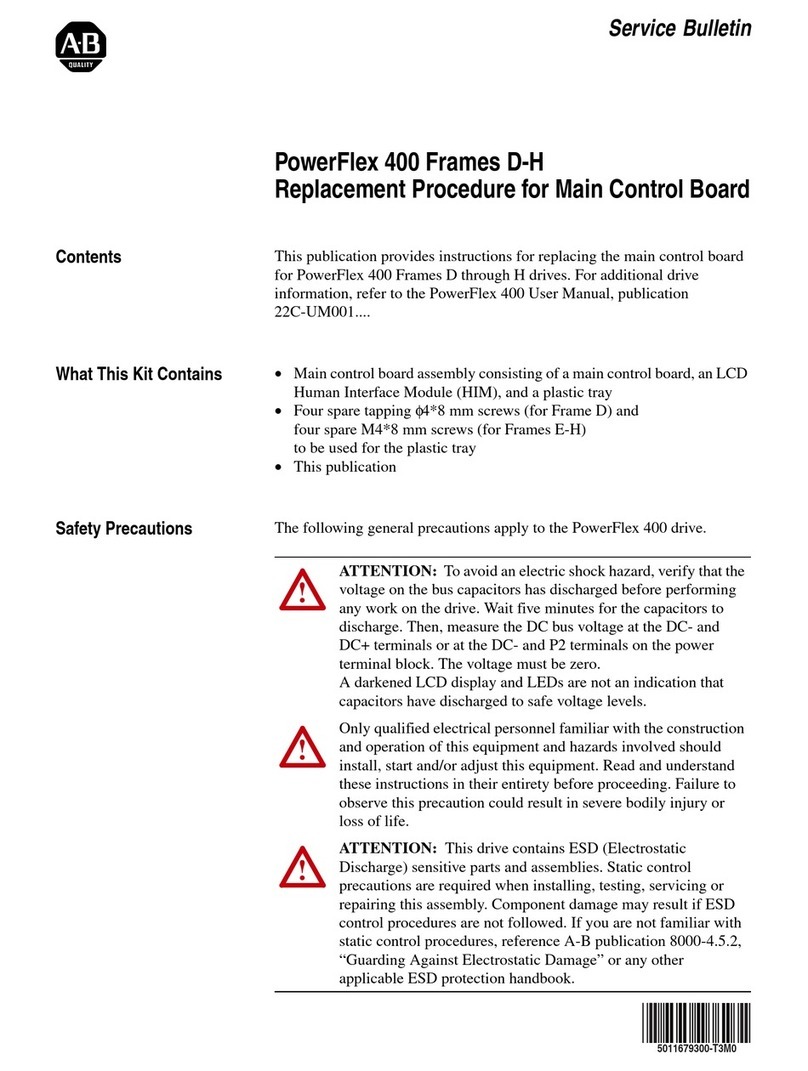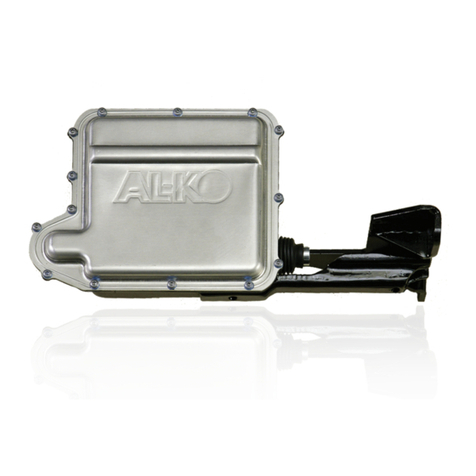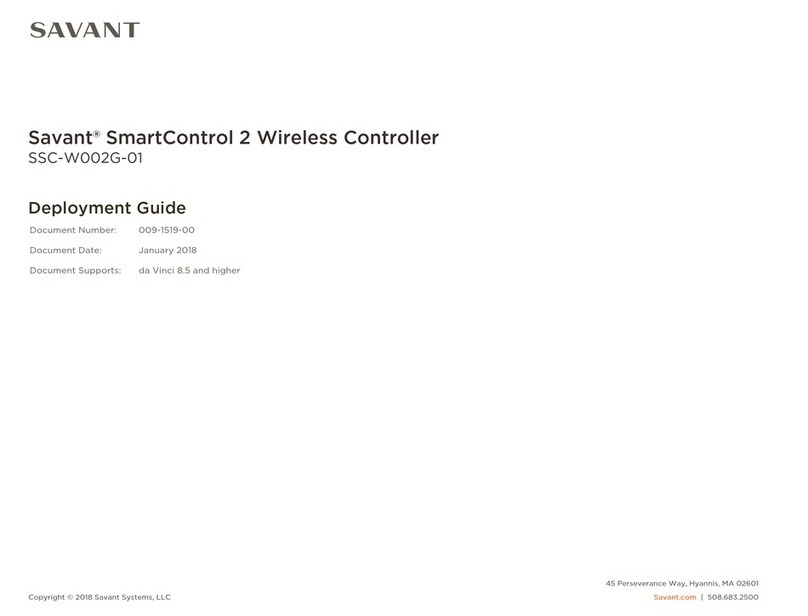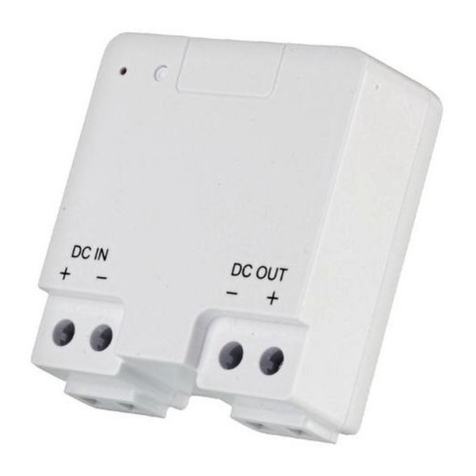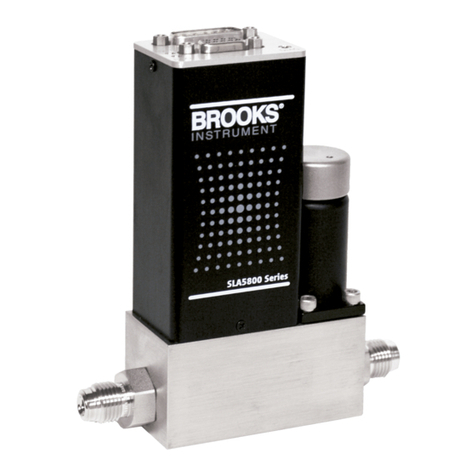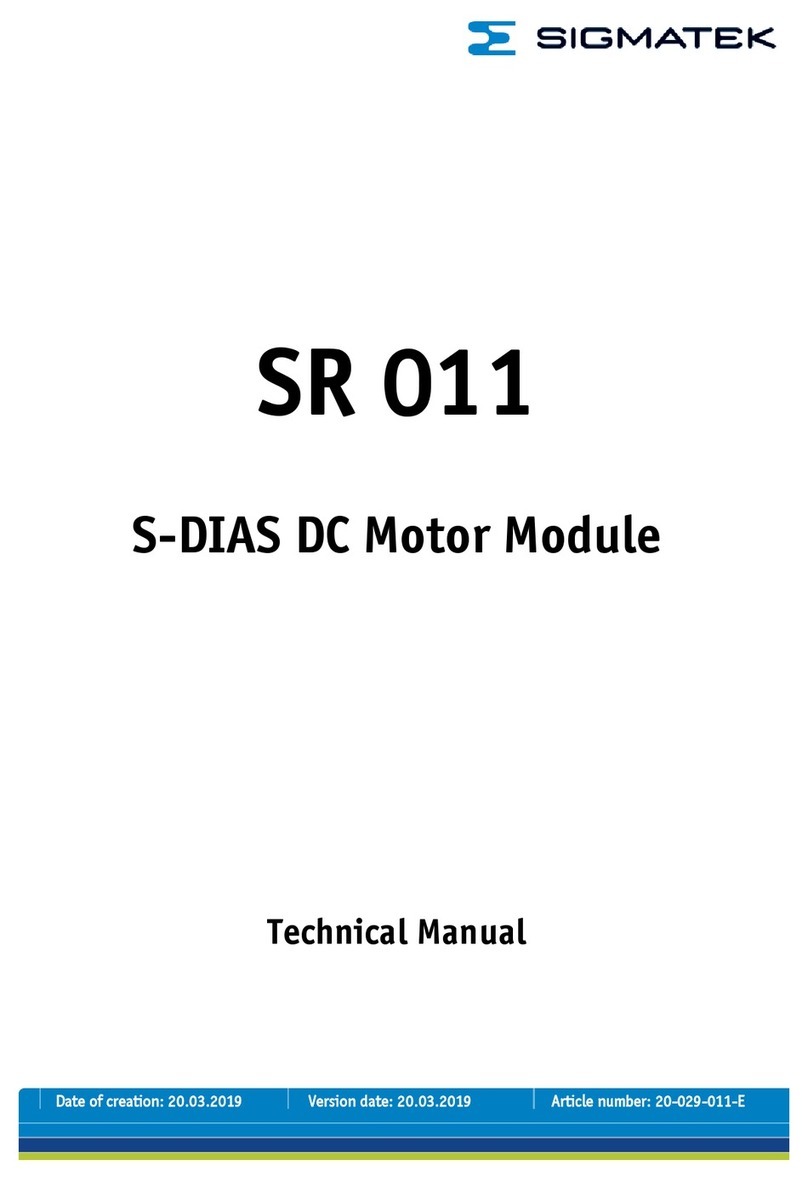
T208VR Series
7
Type T208VR Vacuum Regulator
Key numbers are referenced in Figure 3.
1. Remove the closing cap (key 22) and turn the
adjusting nut (key 20) counterclockwise until all
compression is removed from the control spring
(key 6). If the only further maintenance is to
change the control spring, skip to step 11.
2. Remove the spring case cap screws (key 24)
and hex nuts (key 23) and lift off the spring case
assembly (key 3).
3. Remove the diaphragm (key 10) and attached
parts by tilting it so that the pusher post (key 8)
slips off the lever assembly (key 16). To
separate the diaphragm from the attached parts,
unscrew the hex nut (key 21). If the only further
maintenance is to replace the diaphragm parts,
skip to step 8.
4. To replace the lever assembly (key 16), remove
the machine screws (key 17).
5. To replace the valve stem (key 14), perform steps 1
through 3 of Body Area Maintenance then pull valve
stem (key 14) out of the guide insert (key 18).
6. Install the stem (key 14) into the guide insert
(key 18) and perform Body Area Maintenance
procedure steps 6 through 10 as necessary.
7. Install the lever assembly (key 16) into the valve
stem (key 14) and secure the lever assembly
(key 16) with the machine screws (key 17) using
14 to 19 inch-pounds / 1.6 to 2.1 N•m of torque.
8. Reassemble the diaphragm assembly in the
following order:
• Pusher post (key 8)
• Diaphragm head gasket (key 45)
• Lower Diaphragm head (key 7)
• Diaphragm (key 10)
• Upper Diaphragm head (key 7)
• Washer (key 36)
Secure the parts with hex nut (key 21) using
60 to 72 inch-pounds / 6.8 to 8.1 N•m of torque.
9. Install the pusher post (key 8) plus attached
diaphragm parts onto the lever assembly (key 16).
10. Install the spring case assembly (key 3) and
control spring (key 6) on the lower casing (key 4)
so that the vent assembly (key 26) is correctly
oriented and secure them with the spring case
cap screws (key 24) and hex nuts (key 23) to
ngertightness only.
11. Install the upper spring seat (key 19) and the
adjusting nut (key 20). Turn the adjusting nut
clockwise until there is enough control spring
(key 6) force to provide proper slack to the
diaphragm (key 10) and attached parts. Using a
crisscross pattern, nish tightening the spring case
cap screws (key 24) and hex nuts (key 23) to 90
to 126 inch-pounds / 10.2 to 14.2 N•m of torque.
Adjust the control pressure to the desired pressure
setting, refer to Adjustment section.
12. Install a replacement closing cap gasket (key 25)
if necessary and then install the closing cap
(key 22).
Type T208VRM Vacuum Regulator
Key numbers are referenced in Figure 4.
1. Remove the closing cap (key 22) and turn the
adjusting nut (key 20) counterclockwise until all
compression is removed from the control spring
(key 6). If the only further maintenance is to
change the control spring, skip to step 10.
2. Remove the spring case cap screws (key 24)
and hex nuts (key 23) and lift off the spring case
assembly (key 3).
3. Remove the diaphragm (key 10) and attached
parts by tilting it so that the pusher post (key 8)
slips off the lever assembly (key 16). To
separate the diaphragm from the attached parts,
unscrew the hex nut (key 21). If the only further
maintenance is to replace the diaphragm parts or
change the control spring (key 6), skip to step 8.
4. To replace the lever assembly (key 16), remove
the machine screws (key 17).
5. To replace the valve stem (key 14) and stem seal
O-ring (key 30), perform steps 1 through 3 of Body
Area Maintenance and then pull the valve stem out
of the guide insert (key 18).
6. Lightly grease the replacement stem seal O-ring
(key 30) and install on the valve stem (key 14).
Install the valve stem by pushing it into the guide
insert (key 18). Perform Body Area Maintenance
procedure steps 6 through 10 as necessary.
7. Install the lever assembly (key 16) into the valve
stem (key 14) and secure the lever assembly with
the machine screws (key 17) using 14 to
19 inch- pounds / 1.6 to 2.1 N•m of torque.
